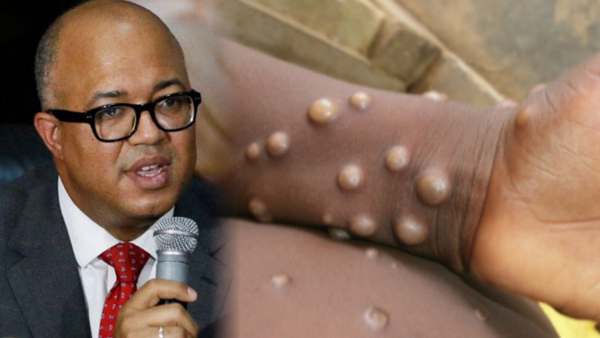Monkeypox and its Prevention

What is monkeypox?
Monkeypox is a rare disease caused by the monkeypox virus. It leads to rash and flu-like symptoms. Like the better known virus that causes smallpox, it is classified as an orthopoxvirus.
Monkeypox was discovered in 1958 when two outbreaks of a pox-like disease occurred in groups of monkeys being used for research. Despite its name, the monkeypox virus no longer comes from monkeys. Scientists aren’t certain, but it’s thought to be spread by small rodents and squirrels in the rainforests of Africa. There are two types (strains) of monkeypox virus — Central African and West African. Central African monkeypox virus causes more severe infections and is more likely to cause death than West African monkeypox virus.
How common is monkeypox?
Monkeypox is rare. But the number of cases in Africa has been increasing. Smallpox and monkeypox are caused by similar viruses, so when people were vaccinated against smallpox it also protected them from getting monkeypox. Since smallpox is no longer a disease and people are no longer vaccinated against it, they don’t have that protection against monkeypox.
Where else is monkeypox found?
Monkeypox has mostly been seen in the Democratic Republic of the Congo. However, it’s occasionally found in other countries, including the United States. In the spring of 2003, the first outbreak of monkeypox outside of Africa occurred in the United States. A shipment of infected animals from Ghana was imported into Texas. The infected rodents spread the virus to pet prairie dogs, which then infected 47 people in the Midwest. In the summer of 2021, a case of monkeypox was found in a U.S. resident who had traveled from Nigeria to the United States.

Who does monkeypox affect?
Anyone can get monkeypox. However, it’s more common in children. Of cases in Africa, 90% were among children under 15 years old.
What are the signs and symptoms of monkeypox?
Monkeypox symptoms are similar to but milder than smallpox symptoms. Early signs of monkeypox include flu-like symptoms such as:
After one to three days, a rash with raised bumps develops. The rash often starts on your face and then spreads to other parts of your body, including the palms of your hands and soles of your feet. The rash starts as flat, red bumps. The bumps turn into blisters, which fill with pus. After several days, the blisters crust over and fall off.
How do you catch monkeypox?
Monkeypox is spread when you come into contact with an animal or a person infected with the virus. Animal-to-person transmission occurs through broken skin, like from bites or scratches, or through direct contact with an infected animal’s blood, bodily fluids or pox lesions.
Monkeypox can spread from person to person as well, but it’s less common. Person-to-person spread (transmission) occurs when you come in contact with virus particles from another person. When an infected person coughs or sneezes, the virus can be transmitted through airborne droplets. It requires prolonged face-to-face contact, but you can then breathe in these tiny droplets from someone else (respiratory droplets), or get them in your eyes or nose. You can also get it directly from touching the lesions on an infected person.
You can also get monkeypox by coming into direct or indirect contact with materials contaminated with the virus. These materials can include clothing, bedding and other linens used by an infected person or animal.

How is monkeypox diagnosed?
Because monkeypox is so rare, your healthcare provider may first suspect other rash illnesses, such as measles, chickenpox or even smallpox. However, swollen lymph nodes distinguish monkeypox from other poxes.
To diagnose monkeypox, your healthcare provider takes a tissue sample that is looked at using a microscope. You may also need to give a blood sample to check for the monkeypox virus or antibodies your immune system makes to it.
Is monkeypox curable?
There’s currently no proven, safe treatment available for monkeypox. Antiviral drugs may help, but they haven’t been studied as a treatment for monkeypox. Instead, your healthcare provider will monitor your condition and try to relieve your symptoms. Most people get better on their own without treatment. If there is an outbreak of monkeypox in multiple people, the Center for Disease Control (CDC) has options to control the spread of the disease using the smallpox vaccine and other treatments.
How do you prevent monkeypox virus?
A smallpox vaccine can provide protection against monkeypox, but its use is currently limited to people who work in a lab with the variola (smallpox) virus. Prevention depends on decreasing human contact with infected animals and limiting person-to-person spread. You can prevent monkeypox virus by:
- Avoiding contact with infected animals (especially sick or dead animals).
- Avoiding contact with bedding and other materials contaminated with the virus.
- Washing your hands with soap and water after coming into contact with an infected animal.
- Thoroughly cooking all foods that contain animal meat or parts.
- Avoiding contact with people who may be infected with the virus.
- Using personal protective equipment (PPE) when caring for people infected with the virus.

How long does monkeypox last?
Monkeypox normally takes about two to four weeks to run its course. If you are exposed to monkeypox, your provider will monitor you for 21 days.
Is monkeypox fatal?
Monkeypox is milder than smallpox, but it can still be fatal. Monkeypox causes death in up to 10% of cases.

A note from Cleveland Clinic
Monkeypox is a rare disease similar to smallpox. It occurs mainly in western and central regions of Africa and usually isn’t a cause for concern in the United States. However, outbreaks have occurred, and it’s important to be aware of the symptoms. Early symptoms are flu-like and include fever, chills and body aches. After a few days, a rash will begin to develop. Monkeypox is milder than smallpox, but it’s still important to be seen by a healthcare provider if you develop any symptoms.
